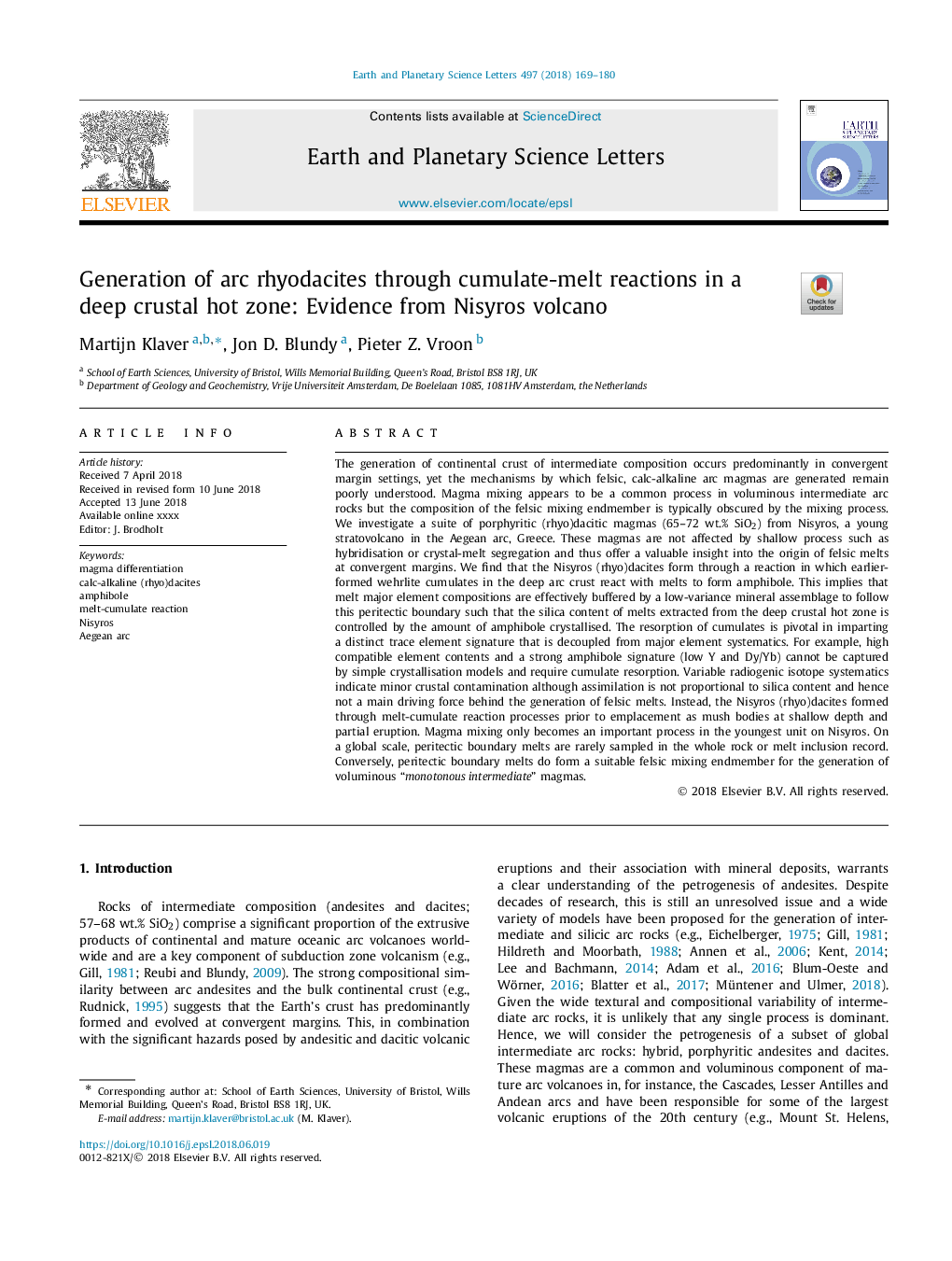| کد مقاله | کد نشریه | سال انتشار | مقاله انگلیسی | نسخه تمام متن |
|---|---|---|---|---|
| 8906758 | 1634659 | 2018 | 12 صفحه PDF | دانلود رایگان |
عنوان انگلیسی مقاله ISI
Generation of arc rhyodacites through cumulate-melt reactions in a deep crustal hot zone: Evidence from Nisyros volcano
ترجمه فارسی عنوان
تولید قوچ ریداکتیت ها از طریق واکنش های انباشتگی و ذوب در ناحیه ی داغ زمینی خشت: شواهدی از آتشفشان نیشروس
دانلود مقاله + سفارش ترجمه
دانلود مقاله ISI انگلیسی
رایگان برای ایرانیان
کلمات کلیدی
موضوعات مرتبط
مهندسی و علوم پایه
علوم زمین و سیارات
علوم زمین و سیاره ای (عمومی)
چکیده انگلیسی
The generation of continental crust of intermediate composition occurs predominantly in convergent margin settings, yet the mechanisms by which felsic, calc-alkaline arc magmas are generated remain poorly understood. Magma mixing appears to be a common process in voluminous intermediate arc rocks but the composition of the felsic mixing endmember is typically obscured by the mixing process. We investigate a suite of porphyritic (rhyo)dacitic magmas (65-72 wt.% SiO2) from Nisyros, a young stratovolcano in the Aegean arc, Greece. These magmas are not affected by shallow process such as hybridisation or crystal-melt segregation and thus offer a valuable insight into the origin of felsic melts at convergent margins. We find that the Nisyros (rhyo)dacites form through a reaction in which earlier-formed wehrlite cumulates in the deep arc crust react with melts to form amphibole. This implies that melt major element compositions are effectively buffered by a low-variance mineral assemblage to follow this peritectic boundary such that the silica content of melts extracted from the deep crustal hot zone is controlled by the amount of amphibole crystallised. The resorption of cumulates is pivotal in imparting a distinct trace element signature that is decoupled from major element systematics. For example, high compatible element contents and a strong amphibole signature (low Y and Dy/Yb) cannot be captured by simple crystallisation models and require cumulate resorption. Variable radiogenic isotope systematics indicate minor crustal contamination although assimilation is not proportional to silica content and hence not a main driving force behind the generation of felsic melts. Instead, the Nisyros (rhyo)dacites formed through melt-cumulate reaction processes prior to emplacement as mush bodies at shallow depth and partial eruption. Magma mixing only becomes an important process in the youngest unit on Nisyros. On a global scale, peritectic boundary melts are rarely sampled in the whole rock or melt inclusion record. Conversely, peritectic boundary melts do form a suitable felsic mixing endmember for the generation of voluminous “monotonous intermediate” magmas.
ناشر
Database: Elsevier - ScienceDirect (ساینس دایرکت)
Journal: Earth and Planetary Science Letters - Volume 497, 1 September 2018, Pages 169-180
Journal: Earth and Planetary Science Letters - Volume 497, 1 September 2018, Pages 169-180
نویسندگان
Martijn Klaver, Jon D. Blundy, Pieter Z. Vroon,
